The Message Is the Movement: Your Guide to Smarter Protest Signage
Do you know how to design signs that sing?
The April 5th "Hands Off!" protests were awesome—massive in scale, urgent in tone, and deeply necessary. In over 1,400 cities across the United States, people poured into the streets to demand that President Donald Trump and Elon Musk leave our essential government services alone.
But protests don’t speak for themselves. They must be interpreted—by the public, the media, and political elites. And when that interpretation is unclear, the power of the protest is lost.
When Protest Signs Scatter, So Does the Message
The signs at the protests told a story—or rather, they told many stories. Some warned of fascism, others focused on reproductive rights, climate, or immigration. Some mocked Trump; others mourned democracy. A few simply vented rage.
As a result, the New York Times struggled to summarize what the demonstrations were about. Their coverage began:
“They came out in defense of national parks and small businesses, public education and health care for veterans, abortion rights and fair elections. They marched against tariffs and oligarchs, dark money and fascism, the deportation of legal immigrants and the Department of Government of Efficiency.”
That’s not a message. It’s a policy mashup.
This isn’t a critique of the people who showed up. It’s a strategic challenge for anyone who wants this movement to grow.
Protest signs are more than creative expressions. They’re real-time public communication. They show what we prioritize, how we think about change, and whether we’re building power—or just blowing off steam.
We Can Do Better Next Time
The phrase “Hands Off” was a messaging gift—simple, memorable, and adaptable across issues. It framed the protests in terms of protection, not partisanship. And it offered exactly the kind of repetition movements need to break through the noise.
But we didn’t use it—at least not enough.
Instead of converging around a shared frame, most signs veered off into individual narratives and metaphors. We squandered the chance to saturate the public space with a chorus of aligned, unmistakable messages.
Imagine if thousands of signs across the country had been more targeted:
“Hands Off Social Security”
“Hands Off Medicare”
“Hands Off Veterans’ Benefits”
Then, afterward, the New York Times would have said:
“Today, a million Americans across the country turned out to demand that Trump and Musk take their ‘hands off’ of vital public services, including Social Security, Medicare, and Veterans’ benefits.”
Fortunately, it’s not too late. With more coordination, next time we can center the “hands off” protests around the issues most likely to build consensus.
How to Think About Protest Signs: Strategic Roles, Not Just Slogans
Not all protest signs serve the same function—and a well-organized protest plans for a variety of purposes. Some signs build morale. Others persuade. Some grab attention; others invite participation. The key is not whether a sign is “good” or “bad,” but whether it fits the strategy—and where it fits within the larger message ecosystem.
Think of signs not as individual expressions, but as coordinated messages in a living, mobile media campaign. Each one contributes to the broader narrative and should be designed with purpose.
Here are five essential roles protest signs can play:
Persuasion (50%)
These signs are aimed at bystanders, media, and the “moveable middle.” They should communicate the core message of the protest and frame the issue in ways that make sense to people’s everyday lives, especially those who don’t identify as political.
“Hands Off My Social Security”
“Hands Off My Medicare—I Earned It”
“Hands Off Our Schools”
Core Values and Principles (20%)
These signs tie the protest to ideals we all share. They’re not slogans—they’re anchors.
“America Has No King”
“No one elected Elon Musk”
“Free Speech is for Democrats and Republicans”
Identity Markers (10%)
These signs let people see themselves in the protest. They say: “I’m here—and I’m just like you.”
“Another Teacher for Democracy”
“Farmers Against Tariffs”
“Veterans Against DOGE”
Invitation Signs (10%)
These signs are aimed at the people on the sidelines—those watching from the sidewalk, the news, or social media who may be sympathetic but unsure.
“HONK if you want your 401K back.”
“New to Protesting? So Were We”
“It’s Never Too Late to Change Your Mind”
Morale Boosters (10%)
These are inward-facing signs that help people feel energized, united, and proud to be part of the movement.
“We are the ones we’ve been waiting for.” - June Jordan
“The arc of the moral universe is long, but it bends toward justice.” - MLK, Jr.
“When they go low, we go high.” - Michelle Obama
What do you think about this protest signage rubric? Would you add categories? Change the distribution?
Analysis of Signs from the “Hands Off” Protest
1. “HANDS OFF OUR DEMOCRACY!”
This was one of the most common signs at last week’s protests. It’s emotionally resonant, values-driven, and broadly appealing. At first glance, it seems like an ideal message.
But there's a problem: it's too abstract.
“Democracy” means different things to different people. For some, it conjures voting rights and fair elections. For others, it suggests institutional norms or civic participation. Still others associate it with liberal overreach or government inefficiency—especially after years of partisan branding wars.
When we shout “Hands Off Our Democracy!” without anchoring it in specifics, we risk sounding noble but vague. And vague messages are easy to dismiss.
If we want to protect democracy, we have to show what democracy looks like in practice.
So, what does that mean?
Instead of saying, “Hands Off Our Democracy,” we could say:
“Hands Off My Mail-In Ballot”
“Hands Off the Separation of Church and State—No Prayer in Schools”
“Hands Off Voter Registration”
Each of these versions grounds the idea of democracy in something people can relate to. It makes the abstract idea of “democracy” real—because people don’t just care about principles; they care about what those principles protect.
2. “HANDS OFF Federal Workers”
This sign is almost perfect: visually strong, succinct, and aligned with the protest’s central frame. But the term “federal workers” is too abstract for the average person. When we talk about government employees most Americans think of a faceless bureaucrat.
To make the message land, we need to make it personal:
“Hands Off Postal Workers”
“Hands Off VA Nurses”
“Hands Off Forest Rangers”
These versions remind people of real jobs, real people, and real services they rely on. They connect policy to lived experience—exactly what persuasive protest messaging should do.
3. “HONK! If You Never Drunk Texted War Plans”
This is one of my favorite signs from the “Hands Off” protests. Even though it strays from the event’s theme, it’s a strong example of a sign that invites participation. Referencing a recent controversy that even many conservatives found troubling, it’s funny and memorable—ideal for protests along major roads where it can elicit honks and spark bystander curiosity. While it doesn’t persuade or educate, it draws attention and makes the protest feel lively and widespread. Use sparingly.
4. “We the People Are PISSED!”
This is a morale sign. It expresses anger and builds unity, but lacks thematic focus. It’s effective in small numbers, especially when supported by signs that articulate the reasons for that anger and the change we want to see. Too many signs like these, however, will overwhelm the message and turn off the very onlookers we want to reach.
5. “HANDS OFF OUR [EVERYTHING]”
One common problem with signs at the “Hands Off” protests was that people tried to put too many issues on a single poster. It’s understandable. There are so many things to criticize about this Administration's actions that it’s hard to choose just one.
But you need to. Otherwise your message won’t land and it will be as if you said nothing at all.
My suggestion? Instead of cramming seven issues onto one sign, next time, bring six friends and give each one a poster carrying a sign with a single message.
6. “RADICAL LEFT MONSTER”
In addition to signs with too much text, there were signs that combined text with images, creating visual overload. The result was often hard to read, hard to photograph, and easy to overlook.
Here’s a simple rule of thumb: if you’re using a picture, don’t bury it under a lot of text. Your audience doesn’t have time to read a blog post while walking past your sign. Make it easy for them to take in the message at a glance.
The sign above, seen in Santa Cruz, would have been more effective without the text in red on the sides.
Better yet, to turn it into a sign that is on theme and persuasive to undecided voters, I recommend the version below. It’s not as witty, but it will land with people who don’t already agree with us.
7. Signs That Were Counterproductive
Some signs don’t just fail to persuade—they actively undermine the goals of the protest. Here are a few examples from last week's events that drew laughs or shares online, but ultimately weaken our strategic position.
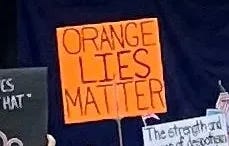
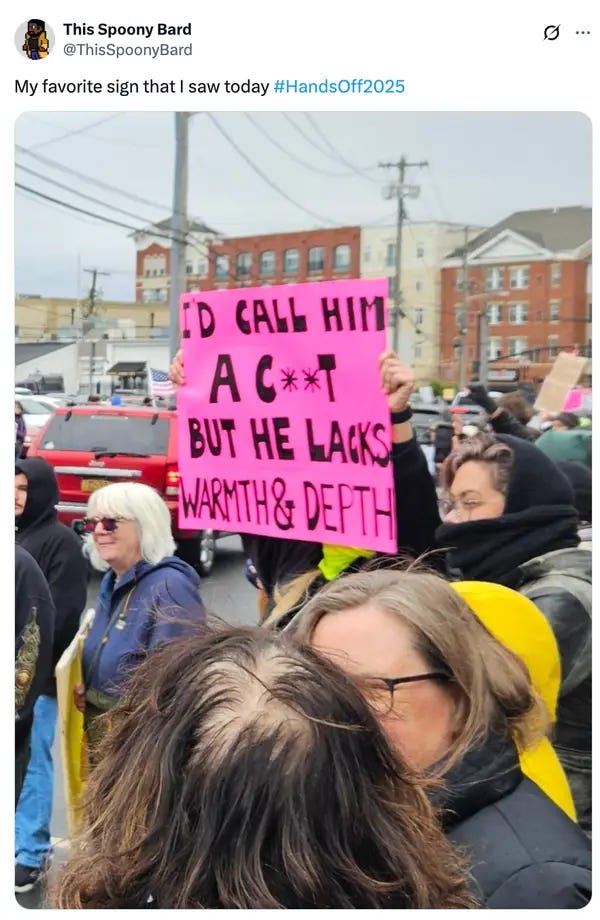


These crude, ad hominem signs may feel cathartic, but they cost us something bigger: respect, moral authority, and the ability to build coalitions. You might think they’re harmless fun, but these are exactly the kind of signs that get photographed by the press and shared with the world. When the stakes are this high, we can’t afford to blow off steam at the expense of persuasion.
Final Thought: The Message Is the Movement
In authoritarian regimes, controlling the narrative is a central goal. Protest signs—visible, human, public—are one of the few tools for resisting that we can entirely control.
But only if we use them wisely.
Our signs show the world who we are and what we value.
The next “Hands Off” protest is on April 19th. If we want to grow this movement and protect what matters most, we need to speak clearly, speak together, and speak to those who haven’t yet joined us.
Because our message is our movement.
Let’s make it count.
Want feedback on your signs or the signs of others? Drop them in the comment section and I’ll share my recommendations for how to improve them next time!
The Smart Politics Way is a new publication. Help us find our people by sharing this article today.
Are you new to Smart Politics? Learn about what makes us different from other progressive political groups by checking out some of our most popular articles:
How to Stop Panicking About Trump
Most progressives believe their level of political distress is purely a function of external events.
10 Steps for Saving Democracy
“Not everything that is faced can be changed, but nothing can be changed until it is faced.” —James Baldwin
Wonder Why the Movement Against Trumpism Feels So Fragile? There's a Void Where Its Heart Should Be
Outrage is a powerful spark, but it burns out fast. To truly resist authoritarianism, we need something deeper—a culture of resistance.



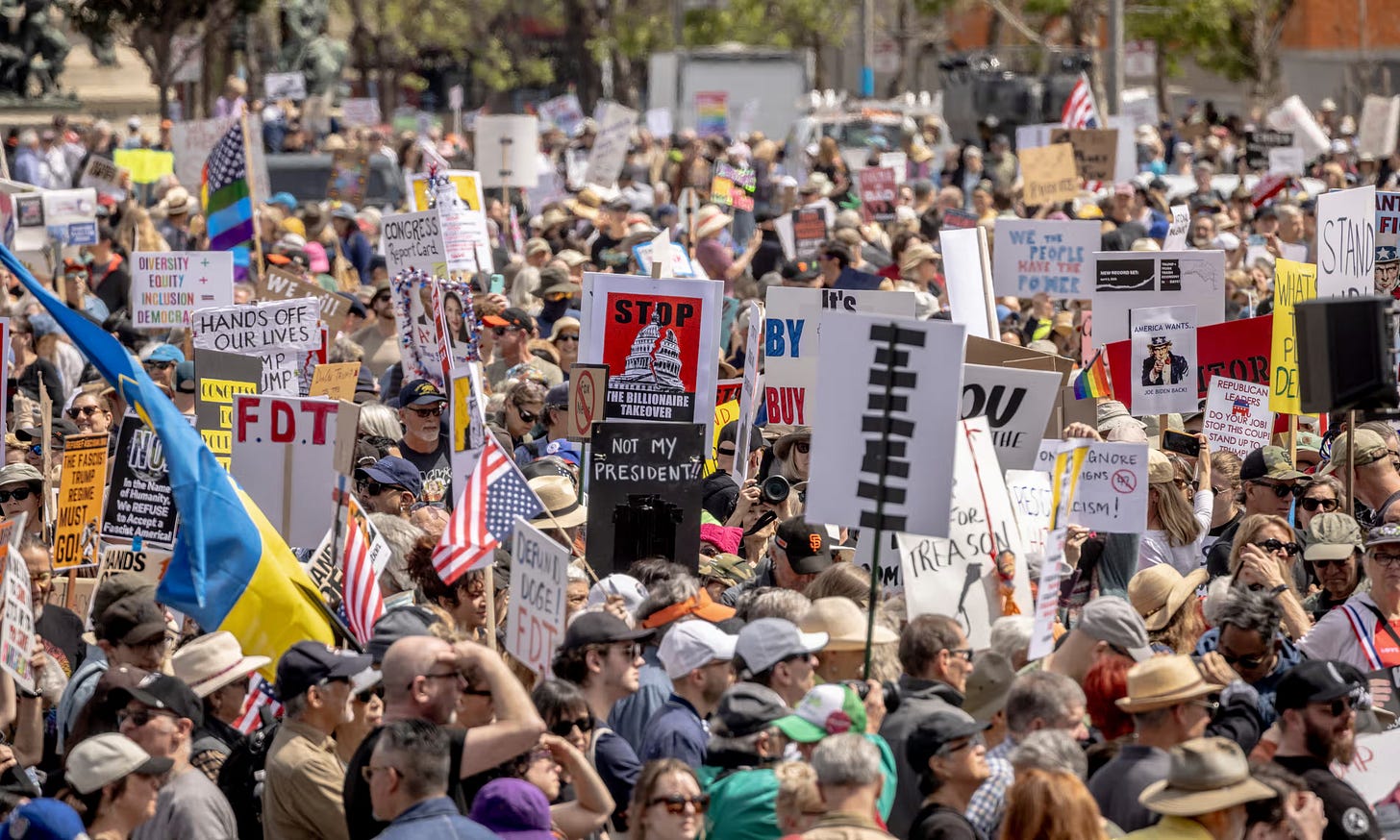


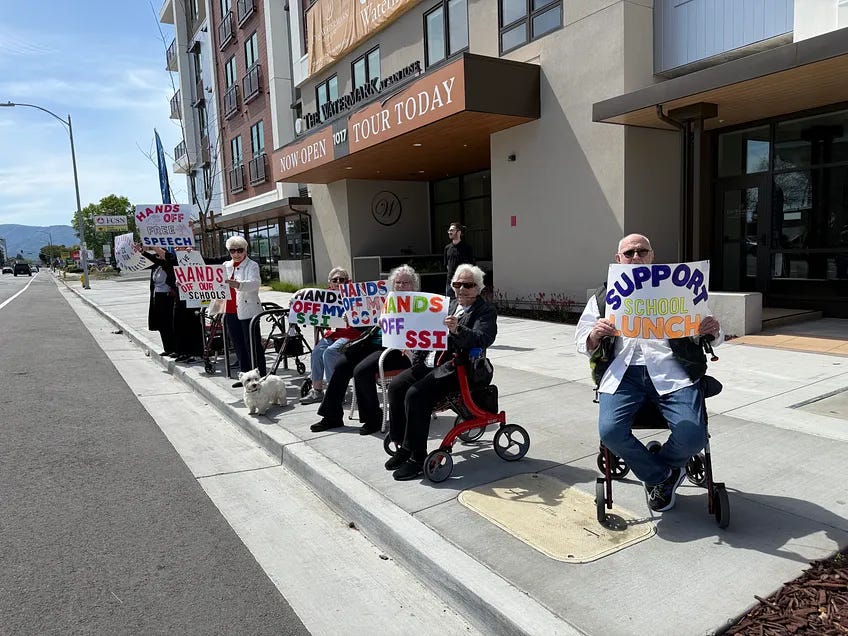

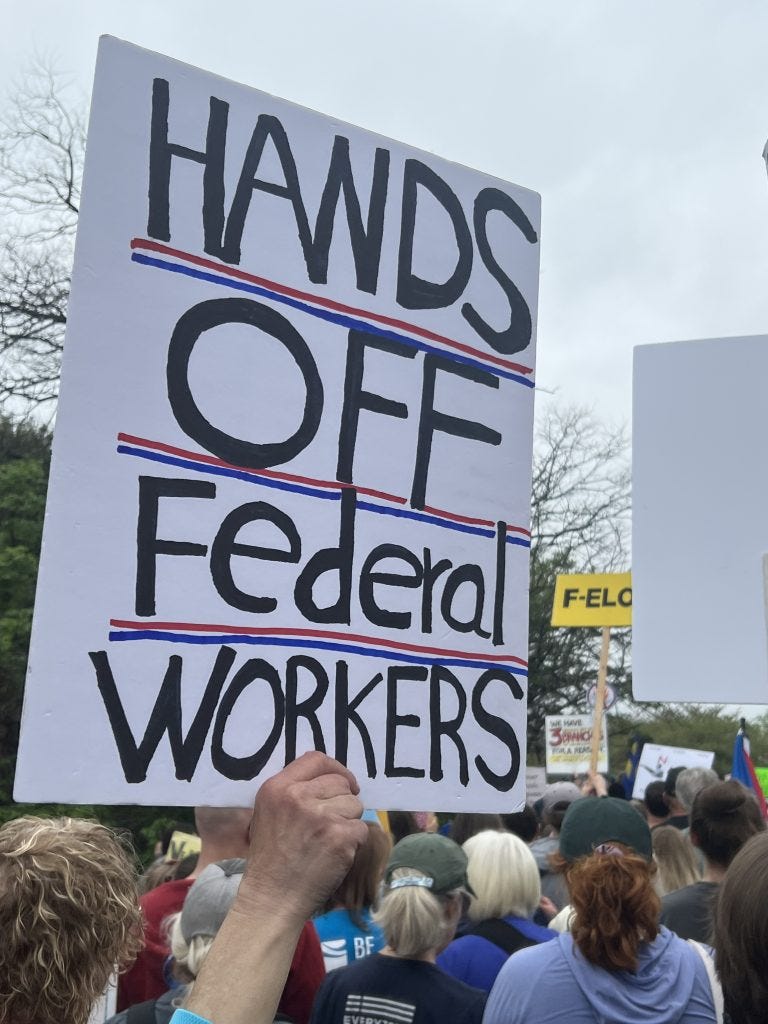
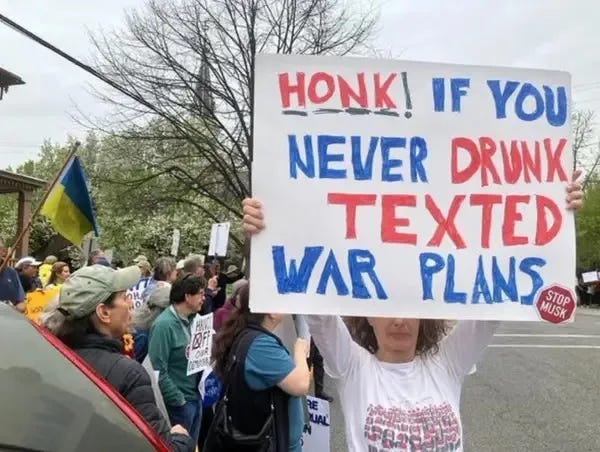

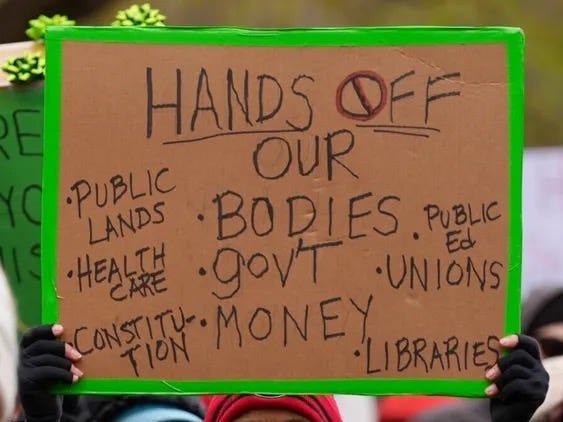



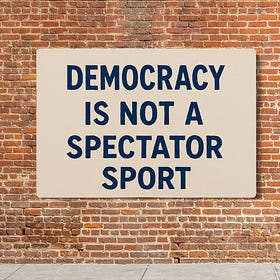

To anyone who feels judged or shamed or embarrassed by this article, please don’t. If you are turning out to protest, that’s FABULOUS and the most important thing. What I’m offering here is about how we can do even better going forward. It isn’t criticism—it’s guidance. Apologies that my writing failed to make that clearer from the outset.
I typically appreciate your good work and contributions to this movement and the moment we find ourselves in. But to use the NY Times’ unsurprisingly weak coverage of the protests as some sort of validation of the protests’ weak messaging misses the mark for me. The NYT has lost credibility as a neutral, unbiased news source. The whole premise of your argument doesn’t work for me if you believe that more consistent messaging on protest signs will somehow sway or improve the corporate news media’s complicit coverage of the “thousands of protesters” 🪧, for example, when in reality there were clearly millions of us who spoke out across the country and the world. We can no longer rely on the legacy media for objective reporting and should never equate their failures as the failures of our movement. Just my two cents.